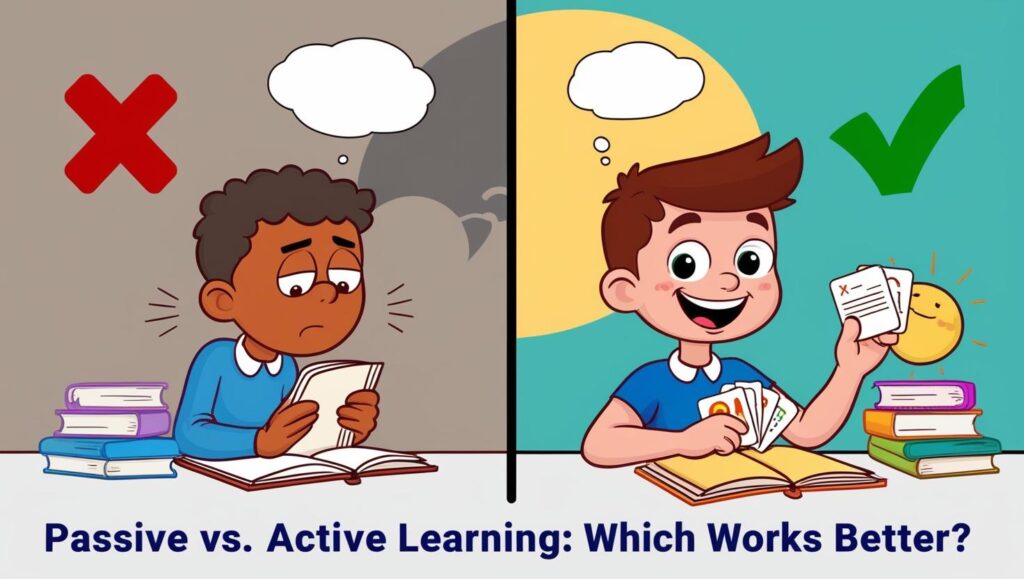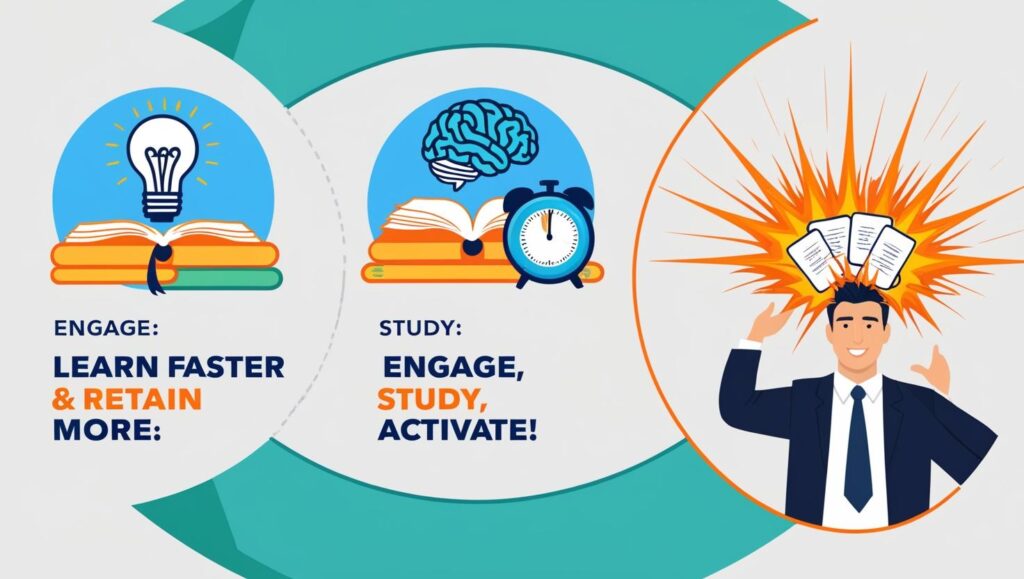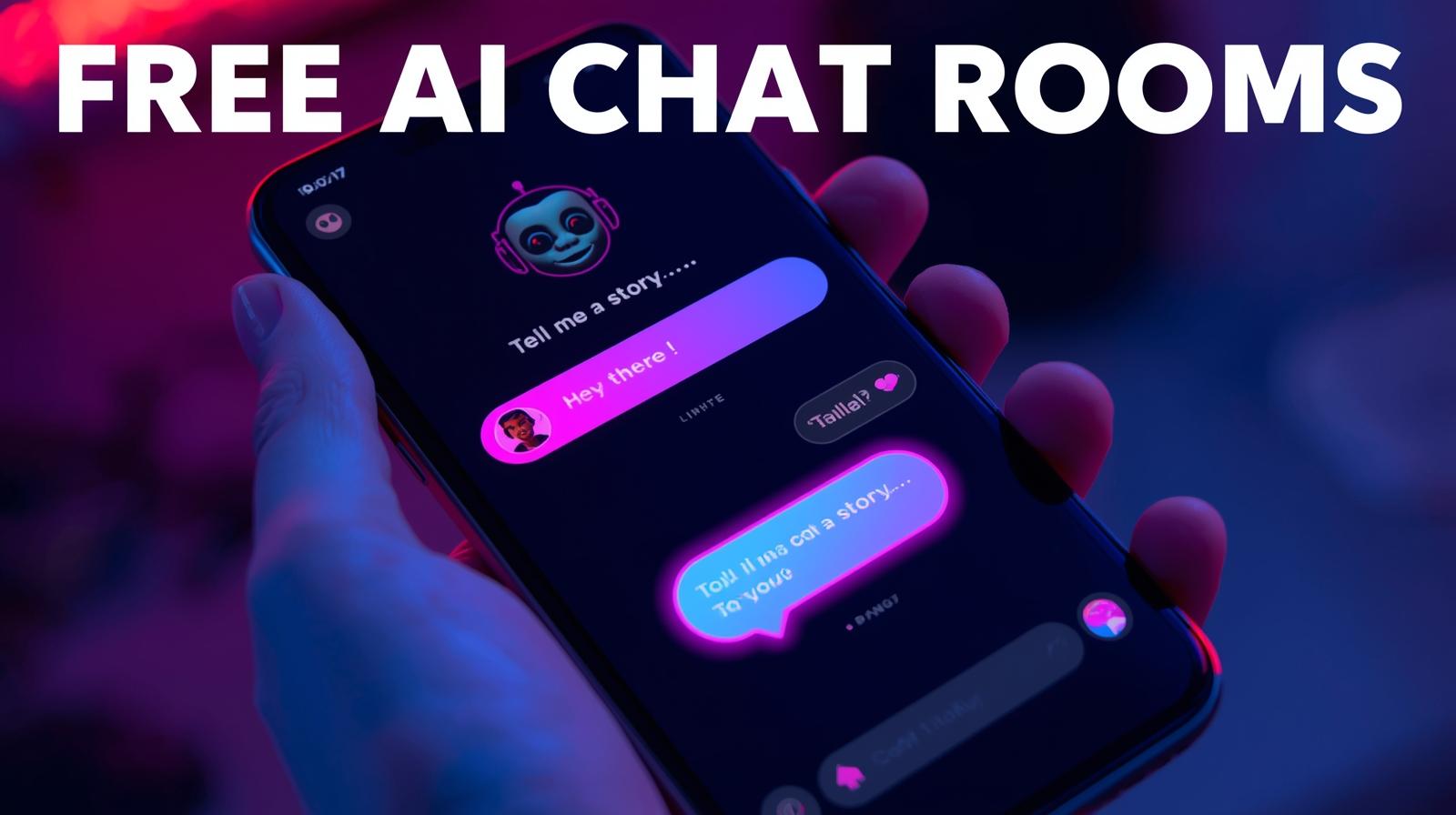Introduction
Let’s face it—learning isn’t always fun, and sometimes it feels like information goes in one ear and out the other. But what if there was a simple formula to help you learn better, faster, and with longer-lasting results? That’s where “Engage, Study, Activate” comes in. This 3-part method isn’t just a catchy phrase—it’s a proven process to help you absorb and retain information more effectively.
The First Step: Engage
What Does “Engage” Mean in Learning?
Engagement is where learning begins. If your brain isn’t turned on, nothing sticks. Engagement means being mentally present and emotionally connected to the topic. It’s that spark of interest that turns “have to learn” into “want to learn.”
Emotional vs. Cognitive Engagement
There are two powerful types of engagement:
- Emotional engagement happens when you care about the topic or connect it to your own life.
- Cognitive engagement is when you actively think about the material, ask questions, and make connections.
Both are essential for deep, meaningful learning.
Practical Ways to Engage with New Information
Active Reading Techniques
Stop passively reading and start highlighting, annotating, and summarizing in your own words. Active readers are engaged readers.
The Power of Curiosity
Curiosity is a learning superpower. Ask yourself: “Why is this important?” or “How does this apply to me?” and let your curiosity lead the way.
The Second Step: Study
Smart Study vs. Hard Study
Studying harder doesn’t always mean studying better. Smart study means using your time wisely with effective techniques.
The Role of Repetition and Review
Cramming might help you pass a test, but you’ll forget everything by next week. Repetition, spaced out over time, is key to long-term memory.
Study Environments That Support Focus
The Pomodoro Technique
Work for 25 minutes, take a 5-minute break. Rinse and repeat. This simple method boosts concentration and prevents burnout.
Mind Mapping and Visualization
Turn your notes into pictures. Your brain loves images—use diagrams, charts, and mind maps to make abstract info easier to recall.
The Third Step: Activate
How Activation Cements Knowledge
Studying alone isn’t enough. You’ve got to use what you learn. Activation is the bridge between knowing and doing.
Teaching Others and Self-Testing
One of the best ways to reinforce your learning? Teach it to someone else. Or quiz yourself regularly. Self-testing is a brain workout.
Real-World Application of Knowledge
Spaced Repetition in Activation
Tools like Anki and Quizlet make spaced repetition easy. Review material at increasing intervals to lock it into long-term memory.
Flashcards and Active Recall
Instead of re-reading, close your notes and try to recall key points. It’s challenging, but it’s how real learning happens.
The Brain Science Behind Engage, Study, Activate
Neuroplasticity Explained
Your brain isn’t static—it changes! Neuroplasticity means your brain forms new connections the more you learn and practice.
Dopamine’s Role in Engagement
Engagement isn’t just about willpower—it’s chemical. Dopamine, the “feel-good” neurotransmitter, boosts memory when you’re interested.
Memory Formation and Retrieval
Memories are formed through repetition and triggered by association. Activate learning often to keep it accessible.
Mistakes to Avoid in the Learning Process

Passive Learning Traps
Just reading, watching videos, or listening to lectures without interaction is a passive trap. You might feel busy, but little is sticking.
Overloading the Brain
More isn’t always better. Study in chunks. Your brain can only process so much at once before hitting the wall.
Ignoring Breaks and Rest
Sleep isn’t wasted time—it’s when your brain organizes everything you’ve learned. Respect your rest.
Tips for Implementing Engage, Study, Activate in Daily Life
Learning Schedules and Routines
Set specific times to learn each day. Routine turns learning into a habit rather than a chore.
Tracking Progress and Reflection
Use journals or apps to track what you’ve learned and reflect on what’s working (and what’s not).
Using Digital Tools Wisely
From time trackers to flashcard apps, there’s a tool for every learner. Just don’t let tech become a distraction.
Conclusion
Learning doesn’t have to be boring or frustrating. With the Engage, Study, Activate approach, you can transform the way you learn—whether you’re a student, a professional, or a lifelong learner. By actively connecting with the material, studying smart, and activating your knowledge in the real world, you’ll retain more, understand better, and enjoy the journey of learning.
FAQs
1. How can I stay engaged while studying boring topics?
Find a way to connect the material to your interests or real life. Set small goals and reward yourself for milestones.
2. What’s the best study method for memory retention?
Spaced repetition and active recall are top-tier for retention. Don’t just read—quiz yourself and revisit material over time.
3. How often should I activate what I learn?
Ideally, activate knowledge within 24–48 hours of learning it, and continue reviewing over the next several days or weeks.
4. Can Engage, Study, Activate be used in group learning?
Absolutely! Group discussions, teaching others, and quizzing each other make learning more interactive and effective.
5. What’s a quick way to apply this method every day?
Start with 10 minutes of focused reading (engage), take brief notes (study), then summarize or teach the key point out loud (activate).



